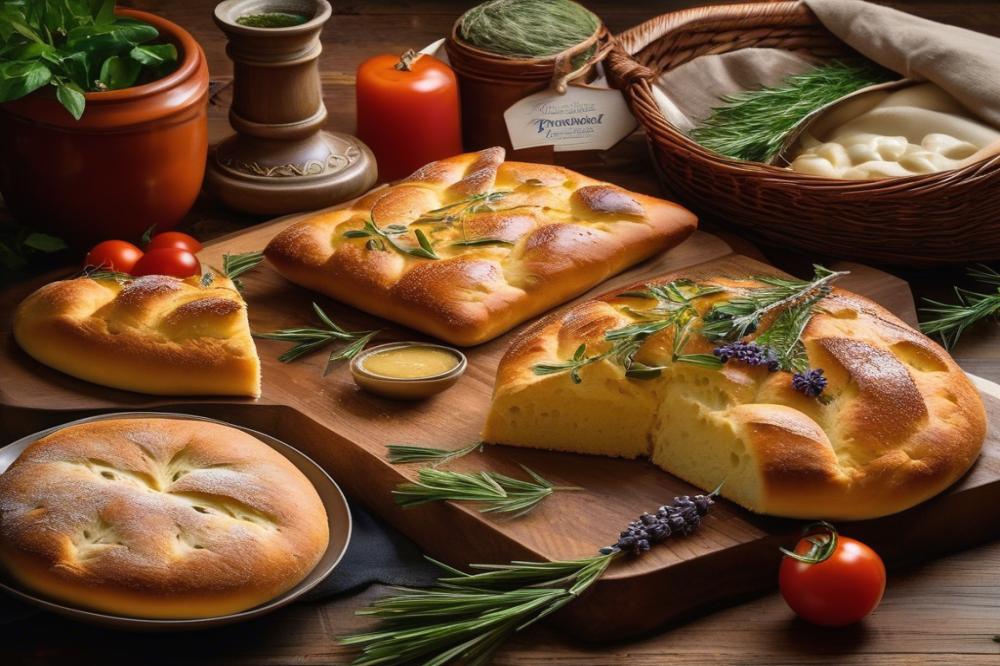Delighting in Tropical Flavors
The Thai mango and coconut Ice Cream Cake offers a delicious glimpse into Asian-style baking. With its mouthwatering layers and vibrant colors, it’s a feast for both the eyes and the palate. This dessert captures the essence of summer, making it a popular choice during those warm months. The refreshing combination of mango and coconut takes everyone on a tropical journey, delivering blissful flavors in every bite.
People often seek out this no-bake cake when the heat rises. The simplicity of preparation allows for an enjoyable experience without the fuss of an oven. Imagine serving this delightful treat at a gathering, instantly captivating friends and family with its exotic taste. For those who love experimenting in the kitchen, this dessert recipe is an inviting project.
An almond crust serves as the base, providing a crunchy contrast to the creamy layers of ice cream and fruity mango. Sweet treats like this bring joy and celebration to any occasion. Thai cuisine is known for its incredible balance of flavors, and this dessert is no exception. It harmonizes sweetness, creaminess, and a touch of nuttiness, embodying all that one hopes for in a summer dessert.
Ingredients

Cake Base (Almond Crust)
- 1 cup almond flour
- 2 tablespoons coconut oil, melted
- 2 tablespoons maple syrup or honey
- 1/4 teaspoon salt
- 1/4 teaspoon vanilla extract
Ice Cream Layers
The dessert recipe includes two delightful ice cream layers—one with mango and another with coconut. Both provide rich tropical flavors. To create the mango layer, gather the following:
- 2 cups ripe mango, pureed (about 3 medium mangoes)
- 1 cup coconut milk
- 1/2 cup heavy cream
- 3/4 cup sugar or any preferred sweetener
- 1 tablespoon lime juice
For the coconut layer, you will need these ingredients:
- 1 cup coconut cream
- 1 cup coconut milk
- 1/2 cup heavy cream
- 3/4 cup sugar or your preferred sweetener
- 1/2 teaspoon vanilla extract
Toppings and Garnishes
Add some finishing touches to elevate your Thai-inspired dessert. These toppings enhance both appearance and taste:
- Fresh mango slices for decoration
- Toasted coconut flakes
- Mint leaves for garnish
- Optional: Drizzle of honey or maple syrup
Method

To prepare a delicious Thai Mango and Coconut Ice Cream Cake, you need to follow a few simple steps. Begin by making the almond crust. Combine one cup of almond flour with two tablespoons of melted coconut oil and one tablespoon of honey. Mix until you achieve a crumbly texture. Next, press this mixture firmly into the bottom of a springform pan. Setting it aside, place the pan in the refrigerator to let the crust firm up while you work on the ice cream.
Moving on to the ice cream mixture, take two cups of coconut milk and pour it into a mixing bowl. Whisk in half a cup of sweetened condensed milk until well combined. Now, puree two ripe mangoes until they are smooth, and fold this mango puree gently into the coconut mixture. Add a pinch of salt for balance. If you’re looking for more tropical flavors, consider adding a splash of fresh lime juice. It will brighten the taste.
Once the mixture is ready, it’s time to start layering the ice cream. Pour a third of the mango and coconut mixture over the almond crust in the springform pan. Use a spatula to spread it evenly. Then, freeze this layer for about 30 minutes until it firms up slightly. This step is crucial for a well-layered ice cream cake.
After the first layer is firm, repeat the layering process. Pour another third of the mixture over the partially frozen layer. Be gentle as you spread it to avoid mixing the layers. Freeze again for another 30 minutes. For added texture and flavor, consider adding pieces of fresh mango or toasted coconut between layers if desired. This can enhance each bite with a bit of crunch.
Complete the layering with the remaining mango coconut mixture. Pour it over the final layer with a gentle touch to keep the structure intact. Smooth the top with a spatula and cover the cake with plastic wrap. Now, freeze the cake for at least four hours to set fully. Overnight is best if you can wait!
Once the time is up, remove the cake from the freezer and let it sit at room temperature for about 10 minutes before releasing it from the springform pan. This will make removing the sides easier. For decoration, consider topping with fresh mango slices or a sprinkle of toasted coconut. These sweet treats will make your dessert recipe visually appealing.
When serving this no-bake cake, cut with a warm knife for smooth slices. Enjoy this refreshing summer dessert. Each bite will remind you of the vibrant and delicious elements of Thai cuisine.
Tips for Success

To make the best Mango Coconut Ice Cream Cake, start with ripe mangoes. The sweetness of the fruit is crucial for achieving a rich flavor. If fresh mangoes are unavailable, don’t hesitate to use frozen ones. They can still bring that delicious tropical taste to your dessert recipe.
Choosing the right coconut is equally important. Coconut cream creates a creamier texture than regular coconut milk. For a lighter cake, you could substitute with light coconut milk. This substitution reduces calories without sacrificing too much flavor.
Using a pre-made almond crust can save time. If making one from scratch, consider mixing in a bit of shredded coconut for extra flavor. Simply press the crust into the bottom of your pan and set it aside while you prepare the filling.
Blending the mangoes into a puree helps distribute the flavor evenly. When combining the mango puree with the ice cream mixture, it ensures a smooth consistency. If you enjoy a bit of texture, leave some chunks intact for added interest.
When it comes to storage, wrap the cake tightly in plastic wrap. This helps prevent freezer burn, which can ruin the quality of your sweet treats. Always keep the no-bake cake in the freezer until you’re ready to serve it.
For serving, slice the cake while it’s still slightly frozen. A warm knife will make cutting easier. Consider garnishing each piece with fresh mango slices or shredded coconut. This not only enhances the visual appeal but also emphasizes the tropical flavors.
Presentation matters, especially with desserts. Serve the ice cream cake on a colorful plate. A sprinkle of toasted nuts can add a delightful crunch and elevate the overall look. Try to bring out the spirit of Thai cuisine through your garnish choices, such as a drizzle of coconut sauce.
Cultural Significance
Mango and coconut hold essential places in Thai cuisine. These ingredients shine in various dishes and desserts. In Thailand, mangoes are celebrated for their sweetness and bright colors. Coconut is valued not just for its flavor but also for its versatility. Creamy coconut milk is often used to add richness to many recipes.
One of the most famous desserts is sticky rice with mango. This simple dessert combines sweet mango slices with glutinous rice. Drizzled with coconut milk, it creates a delightful balance of flavors. Many enjoy this treat during warm months as a refreshing snack. Thus, both mango and coconut play vital roles in the world of Thai sweet treats.
This dessert recipe features tropical flavors that evoke images of sunny beaches. The ice cream cake combines these favorite ingredients in a new way. People often make it as a no-bake cake, perfect for the summer. An almond crust offers a crunchy texture that contrasts with the smooth ice cream. Such combinations work well together in creating a delicious treat.
Other Southeast Asian cuisines also feature similar desserts. In the Philippines, a well-known dish is a coconut and mango dessert called “mango float.” This variation layers mango with cream and biscuits, resembling a cake. Different cultures put their spin on these ingredients, showing their wide appeal. Local traditions influence how these ingredients come together, yet the fundamental flavors remain the same.
Mango and coconut embody the essence of tropical desserts. Their flavors connect people to warm climates and vibrant experiences. Each bite of ice cream cake transports you to a summer paradise. The intriguing blend of familiar tastes makes this dessert more than just a delightful treat. It carries stories, connections, and shared moments from various cultures.
Serving Suggestions
This delightful Mango Coconut Ice Cream Cake shines as a summer dessert. Serve it straight from the freezer on a hot day for a refreshing treat. Slice this no-bake cake into wedges and place them on chilled dessert plates. Garnish each slice with fresh mango slices or a sprinkle of toasted coconut to enhance the tropical flavors.
Pair this ice cream cake with a light drink to elevate the experience. Coconut water or a spritz of sparkling water makes a fantastic choice. For those who enjoy cocktails, consider a mango mojito or a light rum drink to complement the flavors perfectly. After all, adding a refreshing beverage is an excellent way to enjoy sweet treats outdoors.
Occasions for serving this cake are plentiful. Summer barbecues and parties benefit from its enticing colors and flavors. Birthdays and special gatherings also become more delightful with such a dessert recipe. Friends and family will love this unique twist on traditional cake, especially when everyone wants to cool off.
Those who enjoy experimenting might consider serving this ice cream cake alongside other desserts. A scoop of mango sorbet or a passion fruit mousse could create an amazing dessert spread. The almond crust adds a crunchy texture which contrasts nicely with the creaminess of the ice cream.
Highlighting its ties to Thai cuisine, this cake can also take center stage at themed dinners. Whether it’s a casual lunch or a festive evening, its vibrant presentation will surely impress guests. The rich coconut and juicy mango flavors can transport everyone to a beachside paradise, making any occasion feel special.
Final Thoughts on Thai Mango and Coconut Ice Cream Cake
This delightful dessert embodies the essence of summer with its refreshing flavors. Preparing this cake is a simple process. With minimal effort, anyone can create a stunning treat that impresses family and friends. Tropical notes from the mango combined with smooth coconut provide a harmonious blend that tantalizes the taste buds.
A no-bake option means less time in the kitchen during those warm months, allowing more time to enjoy the sun. These sweet flavors captivate the senses, making each bite a miniature vacation. For those looking to add a touch of the exotic to their dessert table, this recipe shines brightly.
Encouragement to try making this cake is warranted. Gathering the ingredients feels like a fun adventure to explore the wonderful world of Thai cuisine. Once you serve it, your guests will undoubtedly appreciate the effort. Celebrate the season with this unique, delicious dessert that makes every gathering merrier. Savor the joy of creating something extraordinary right at home.



